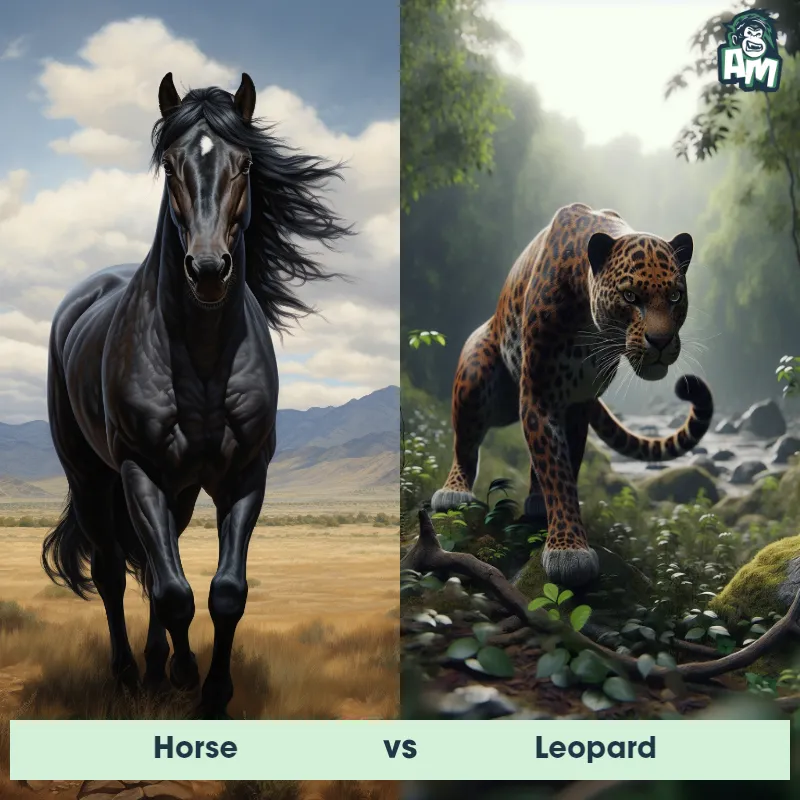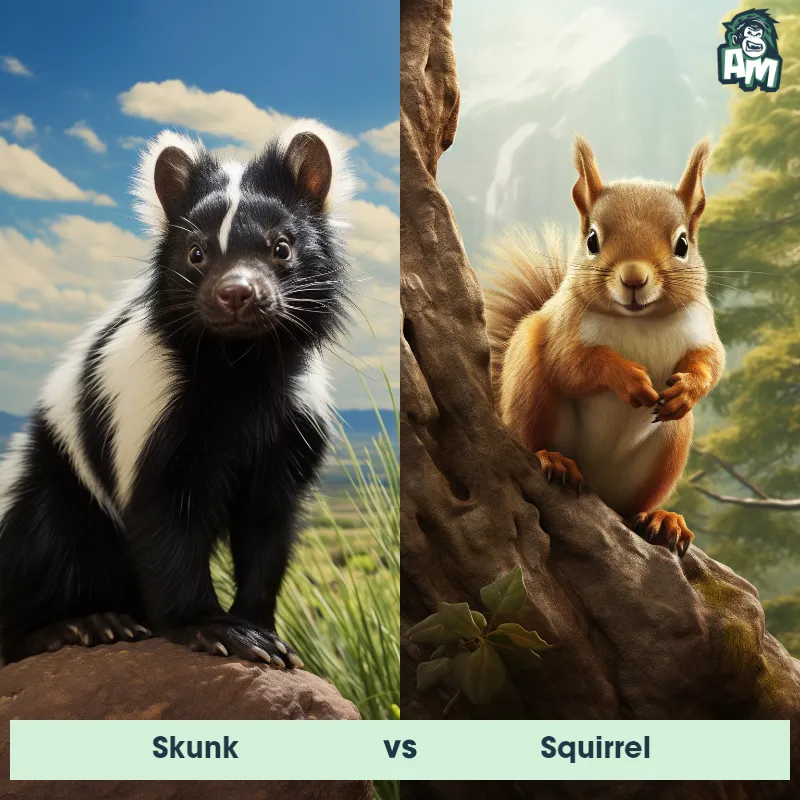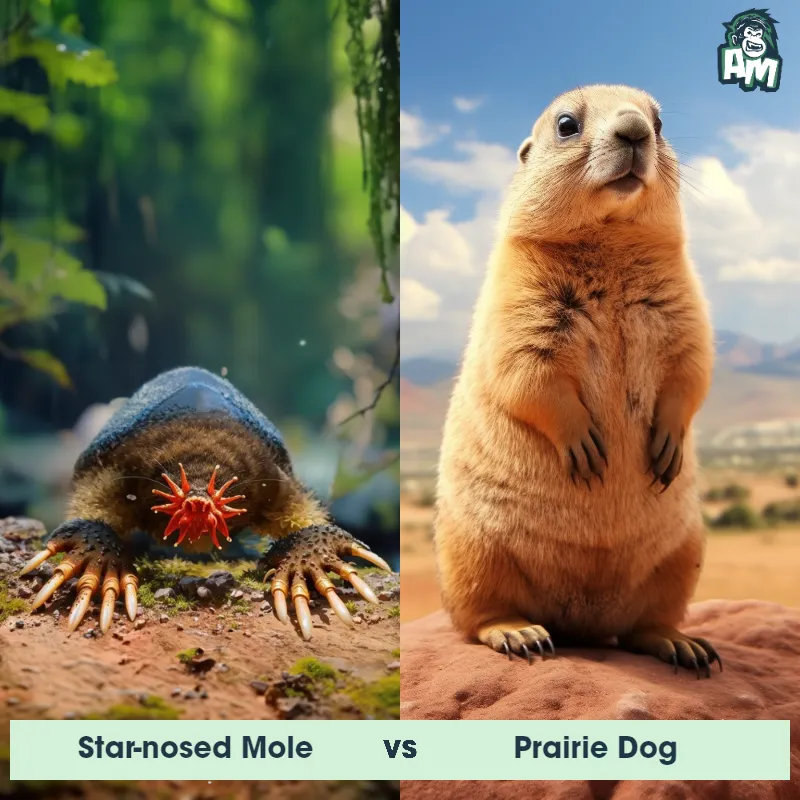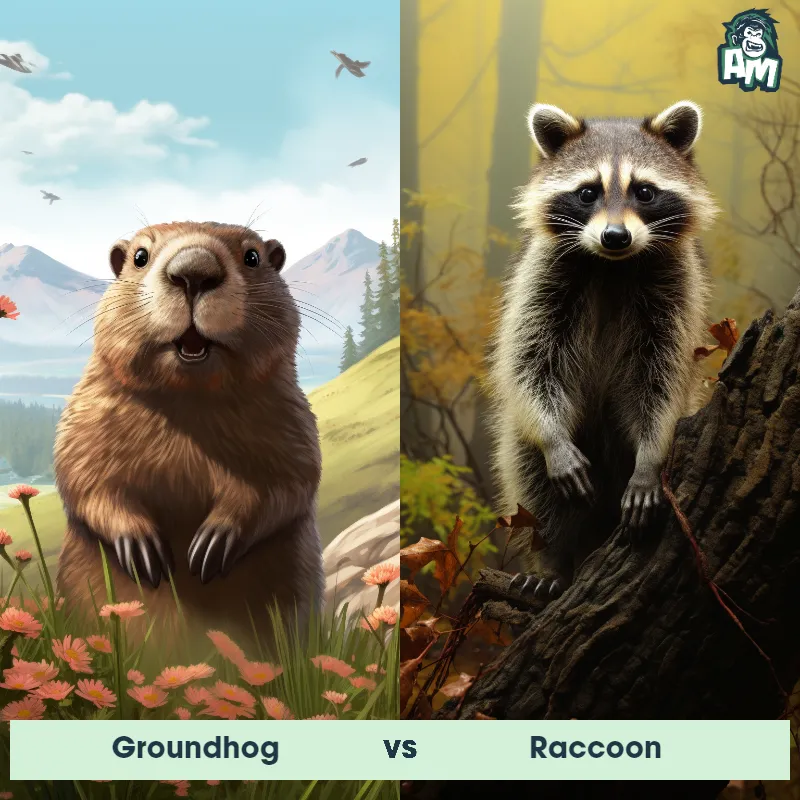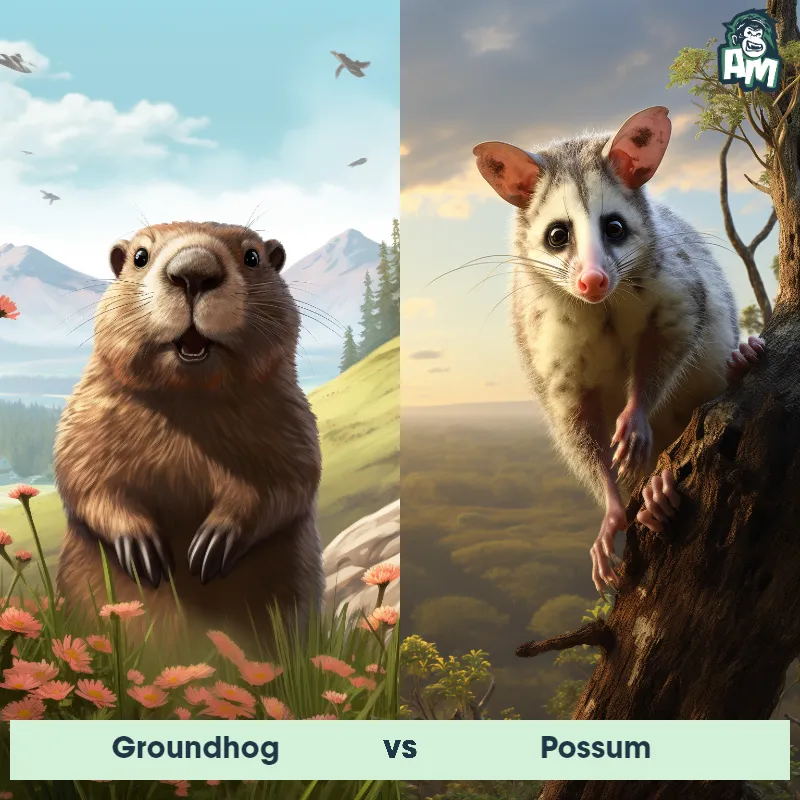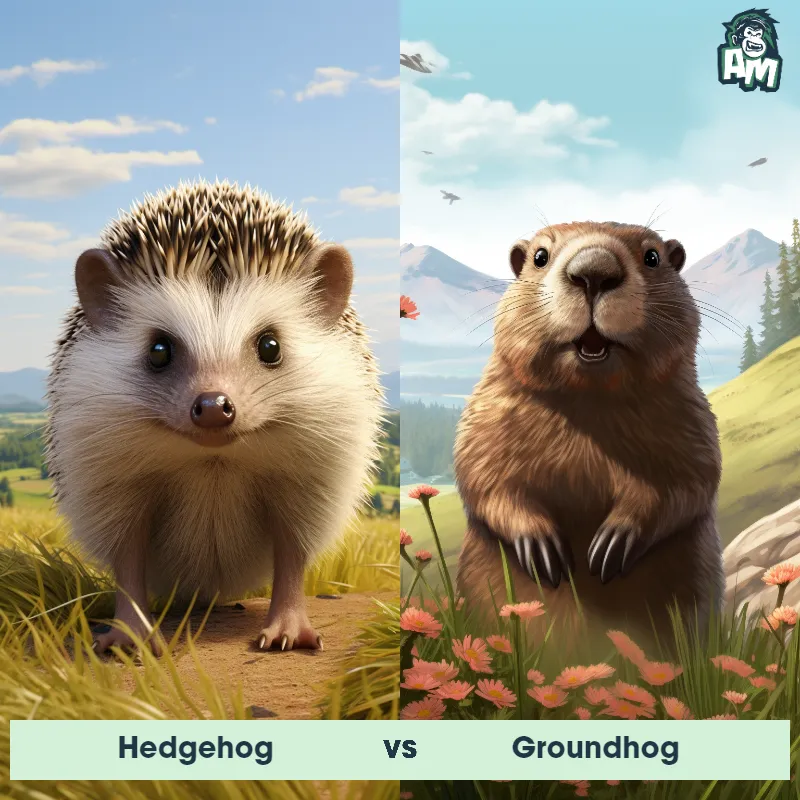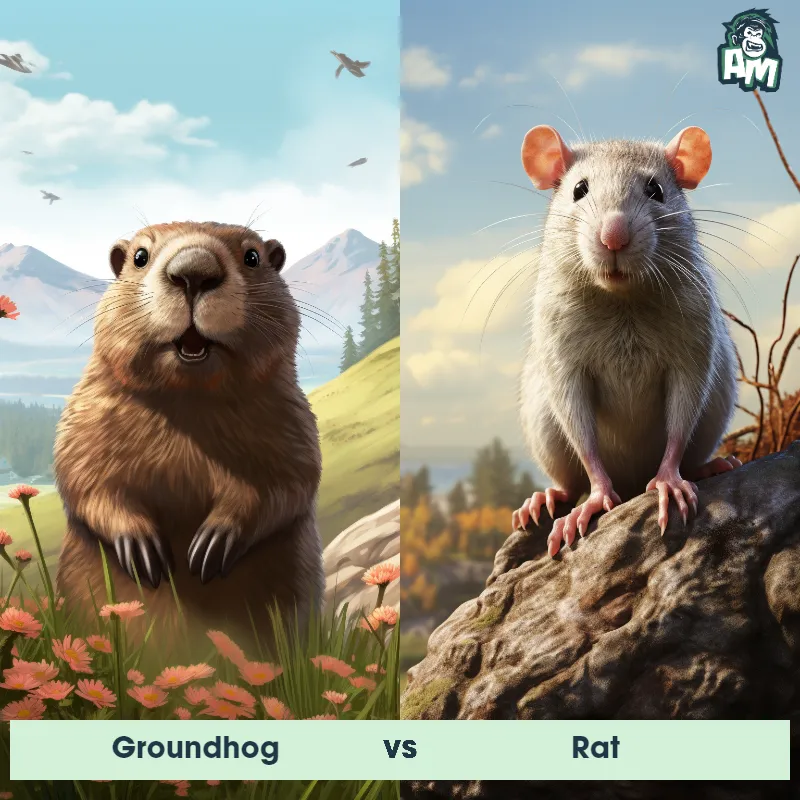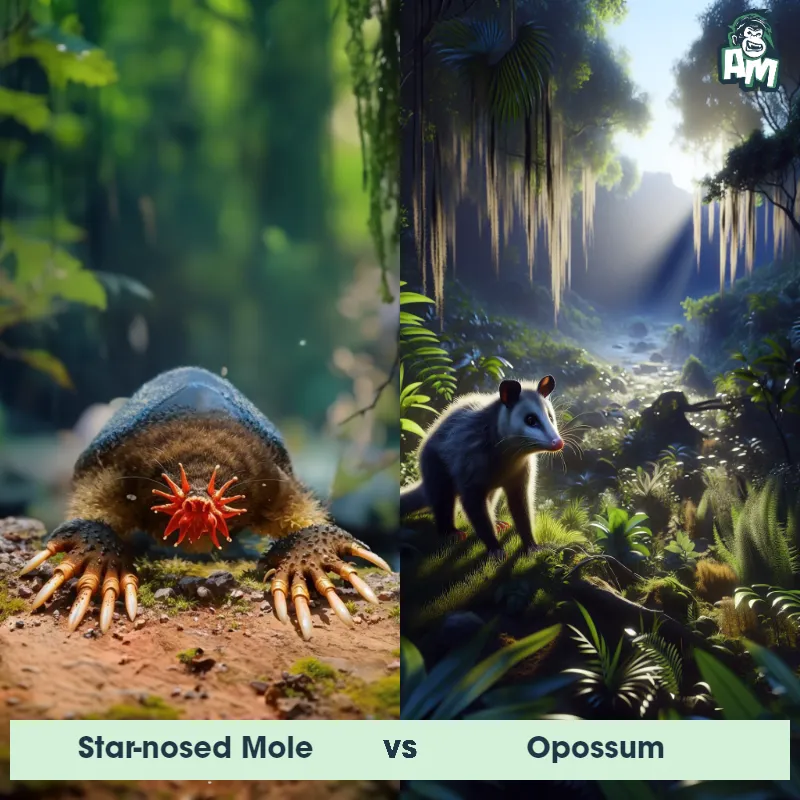European Mole vs Prairie DogSee Who Wins

Welcome, ladies and gentlemen, to this epic showdown between a European Mole and a Prairie Dog. Both of these animals are known for their quick reflexes and fierce determination. It's sure to be an intense battle here today at the arena.
Contender 1: European Mole
The European Mole, scientifically known as Talpa europaea, is a small mammal that belongs to the Talpidae family. These burrowing creatures are typically around 4.3 to 6.7 inches long, with a cylindrical body covered in thick velvety fur that can vary in color from black to grayish-brown. With their sharp claws and streamlined bodies, European Moles are exceptional diggers, creating complex tunnel systems underground. They have sensitive snouts, equipped with whiskers, small eyes that are concealed by fur, and short ears to protect them from debris while burrowing. These nocturnal creatures primarily feed on earthworms and insects.
Fun Fact: The European Mole is a champion of excavation, having the ability to construct networks of intricate underground tunnels spanning a territory of up to 2.5 acres, all achieved through their powerful front limbs and adept digging techniques.
Contender 2: Prairie Dog
The prairie dog is a type of burrowing rodent native to the grasslands of North America. These small creatures have a stout body, a small head, and short legs, which are perfect for their lifestyle underground. They typically have a coat that ranges from brown to reddish in color. Prairie dogs are highly social animals, known to live in large colonies or 'towns' which can consist of hundreds or even thousands of individuals, and their intricate burrow systems can cover large areas.
Fun Fact: Prairie dogs have a complex communication system, using different sounds and calls to warn their colony about the approach of different types of predators.
Matchup Stats
| European Mole | Prairie Dog | |
|---|---|---|
| Size | 4.3 to 6.7 inches (11 to 17 centimeters) | 12-16 inches (30-40 cm) |
| Weight | 2.8 to 4.5 ounces (80 to 130 grams) | 1-3 lbs (0.45-1.36 kg) |
| Speed | 0.5mph (0.8km/h) | 35mph (56km/h) |
| Key Strength | Unknown | Ability to burrow quickly to escape danger |
| Biggest Weakness | Size and physical strength | Small size and lack of strong defensive capabilities |
Current Votes
European Mole vs Prairie Dog
See Who Wins
View More Matches
Looking For More?
Similar Matches
Scientific Stats
| European Mole | Prairie Dog | |
|---|---|---|
| Scientific Name | Talpa europaea | Cynomys |
| Family | Talpidae | Sciuridae |
| Habitat | Underground, burrows | Grasslands |
| Geography | Europe, including Great Britain, Scandinavia, and parts of Russia | North America |
| Diet | Earthworms and insects | Herbivore (Grasses, seeds, and occasionally insects) |
| Lifespan | 3 years - 6 years | 3 years - 5 years |
Key Differences between European Mole and Prairie Dog
- Habitat: European moles are found in Europe and parts of Asia, where they prefer moist soil in forests or grasslands, while Prairie dogs are native to North America, where they inhabit grasslands and prairies.
- Size: European moles are smaller in size, averaging around 5-7 inches in length, while Prairie dogs can grow up to 13-17 inches in length.
- Tail: European moles have a short, thin tail that is barely visible, while Prairie dogs have a long, bushy tail that they hold upright.
- Color: European moles have dark velvety fur, typically black or dark brown, while Prairie dogs have a variety of colors such as tan, white, black, or reddish-brown.
- Lifestyle: European moles are solitary animals that live underground in tunnel systems, while Prairie dogs are social animals that live in colonies called towns.
- Shape: European moles have a cylindrical body and a pointed snout, ideal for burrowing underground, while Prairie dogs have a more slender body with a rounded head.







